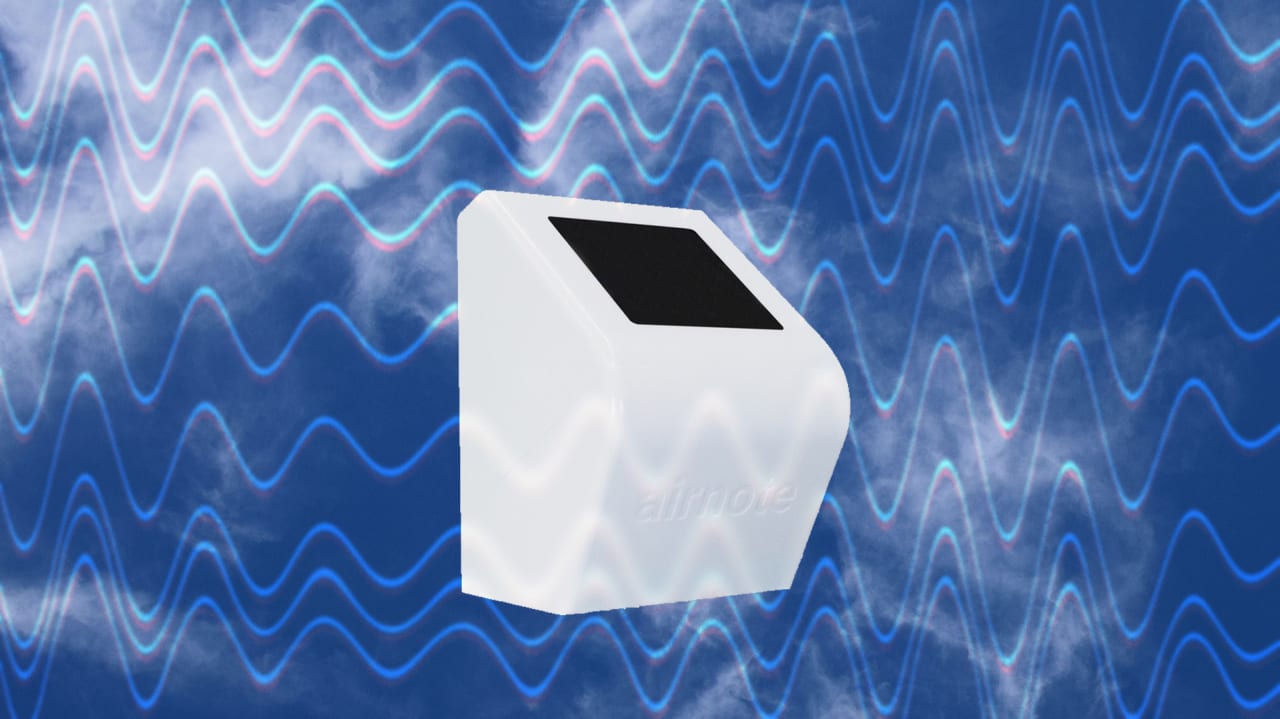“I don’t know you’ve seen this thing yet, but it’s light enough, and it’s got Velcro mounting, so if you have a sunny window somewhere in the house, you can just open the window, reach out, and—after you turn it on—just stick it out there, and it’ll be solar-charged and run autonomously.” Ray Ozzie is on the other end of a Zoom call showing off Airnote, the new air quality monitor from his latest startup, Blues Wireless . As he talks, he brandishes the device—a palm-sized white box with a small LCD display, a built-in AT&T data connection, and an angled top that sports a solar panel. I am at least mildly surprised to find myself in the position of having Ray Ozzie explain a new gadget to me. Since the 1980s, after all, he has been known as one of the biggest brains in software—the mastermind behind pioneering “groupware” application Lotus Notes (still extant as HCL Notes ) and then Groove and Talko , two intriguing collaboration startups he ended up selling to Microsoft. In between Groove and Talko, he served as Microsoft’s chief software architect , succeeding a fellow named Bill Gates and bootstrapping Azure , the portfolio of cloud-based services that eventually turned out to be the future of the company. Ray Ozzie [Photo: courtesy of Blues Wireless] Then again, Ozzie’s intellect has always been focused on the future of communications and collaboration, and that connects some of the dots between his past lives and Blues. Since 2019, the startup has been quietly working on Internet of Things (IoT) hardware and services designed to make it much easier to give just about anything a wireless internet connection. Its pilot customers—whom Blues isn’t ready to talk about yet—have built its Notecard system-on-module board into their own creations. With Airnote, Blues has become its own customer, embedding Notecard in a $149 air quality monitor intended for outdoor use and aimed at both consumers and businesses. It goes on sale on Blues’ site today and is scheduled to ship in early April. To Ozzie, the way Blues shuttles data across the net is still a form of collaboration, even if it’s not human-to-human. “The opportunity here is really to collaborate with machines, not just with people,” he says. The company, which employs around 30 people, is also a personal opportunity for him to go back to basics, getting his hands dirty in ways he’d left behind decades ago: “I haven’t done hardware since the seventies or coded since ’96, and it’s been an amazing journey.” A failure to communicate The ideas that became Blues Wireless have their roots in natural disaster and the challenges of disseminating essential information in its wake—another fact that links the company to Ozzie’s bona fides in communications. Ten years ago this week, Japan suffered the most powerful earthquake in its history , which spawned a massive tsunami . Those catastrophes in turn led to the meltdowns at the Fukushima Daiichi nuclear power plant , which—just by themselves—required the evacuation of 154,000 people. To complicate matters further, the Japanese government and the power plant’s managers were soon criticized for their inadequate communications about the nuclear accident and its implications to the country’s residents

Continued here:
Why software legend Ray Ozzie wants to monitor your home’s air quality